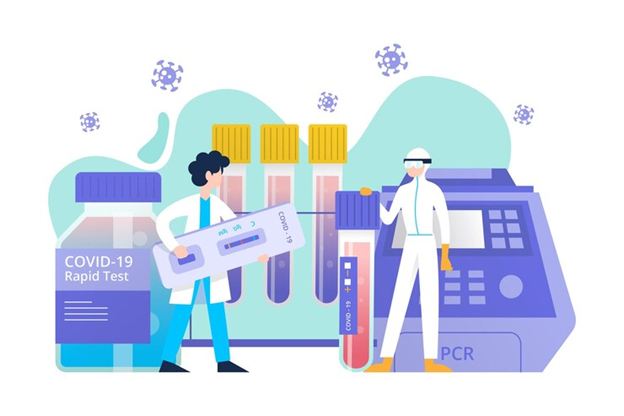Future of Healthcare: Exploring Transforming Medical Technology

Medical technology is constantly changing the healthcare industry, revolutionizing patient care and treatment results. Revolutionary advancements, such as telemedicine solutions and AI-driven diagnostics, are influencing the future of healthcare. These developments increase patient access and experience and diagnostic and treatment speed and accuracy. This exploration will delve into medical technology’s transformative potential and its implications for the future of healthcare.
AI-Powered Diagnostics and Personalized Medicine
By empowering medical professionals to diagnose patients more quickly and accurately, artificial intelligence (AI) is completely changing the diagnostic process. Huge amounts of medical data, such as genetic data, imaging scans, and patient records, may be analyzed by AI algorithms to find patterns and anomalies that would not be visible to the human eye. Early identification of diseases like cancer is made possible by this technology, which improves prognosis and treatment results. AI also makes customized medicine possible by customizing treatment plans for each patient according to their distinct genetic composition, medical background, and lifestyle choices.
Telemedicine and Remote Patient Monitoring
The delivery of healthcare is changing because of telemedicine and remote patient monitoring technology, especially in underserved or distant locations. With the use of these technologies, patients can communicate with healthcare professionals remotely, eliminating the necessity for in-person consultations and lowering access barriers. Telemedicine platforms enable real-time video consultations, where patients can discuss their symptoms, receive medical advice, and even undergo virtual examinations. Healthcare professionals can monitor their patient’s vital signs and health status remotely with the use of wearable sensors and smart home appliances. This enables early intervention and individualized treatment.
Robotics in Surgery and Rehabilitation
The use of robotic technology is transforming surgical techniques by improving control, flexibility, and accuracy. Compared to conventional approaches, robotic surgical systems, such as the da Vinci Surgical System, allow surgeons to conduct minimally invasive treatments with improved precision and skill. These systems employ tiny, accurate devices that are moved by the surgeon, making procedures less intrusive, causing less pain, and helping patients recover more quickly. Robotics is also being used increasingly in rehabilitation treatment to help people heal from surgery or injuries. By offering focused treatment and support with movement, robotic exoskeletons, and rehabilitation robots can aid patients in regaining strength, mobility, and independence.
3D Printing in Healthcare
3D printing technology is revolutionizing the field of healthcare by enabling the production of custom-made medical devices, implants, and even human tissues and organs. Prosthetics that are customized to each patient’s demands, individualized implants, and intricate anatomical structures can all be quickly prototyped and fabricated through 3D printing. In fields like orthopedics, where customized implants can enhance patient outcomes and lower the chance of problems, this technique has significant implications. Moreover, 3D bioprinting presents a promising avenue for regenerative medicine by facilitating the production of organs and tissues for transplantation.
Blockchain in Healthcare Data Management
Blockchain technology is transforming the handling of healthcare data by offering a transparent and safe platform for exchanging, storing, and gaining access to medical information. In order to protect patient privacy and data integrity, blockchain technology enables the development of tamper-proof, decentralized ledgers that can safely store sensitive medical data. Healthcare providers can improve cooperation and care coordination by using blockchain technology to expedite data exchange and interoperability. Furthermore, by providing patients with more control over their health data and safe access to their medical records, blockchain has the potential to empower individuals.
Ensuring Data Security and Privacy:
As healthcare organizations embrace new technologies and digital solutions, ensuring the security and privacy of patient data is paramount. Cybersecurity risks that endanger patient safety and confidentiality include ransomware attacks, phishing schemes, and data breaches. Robust security features, including encryption, access limits, and audit trails, are essential for pharmaceutical software to safeguard confidential patient data from unwanted access or exposure.
Healthcare providers must also have policies and processes in place to guarantee staff adherence to legal obligations like the Health Insurance Portability and Accountability Act (HIPAA) and to train employees on cybersecurity best practices. Prioritizing data security and privacy helps healthcare businesses reduce risks, foster patient confidence, and protect the operational integrity of their business.
Conclusion
In conclusion, the future of healthcare is being shaped by transformative innovations in medical technology. Advancements in AI-powered diagnostics, robotics, 3D printing, blockchain, and telemedicine have the potential to transform patient care, improve outcomes, and elevate the healthcare experience in its entirety. These technologies will become more and more essential in determining how healthcare is delivered in the future as they develop and become more widely adopted. Embracing these innovations will not only improve efficiency and effectiveness but also ensure that patients receive the personalized, high-quality care they deserve.





